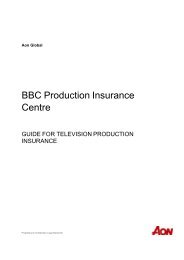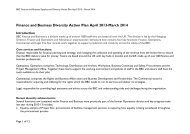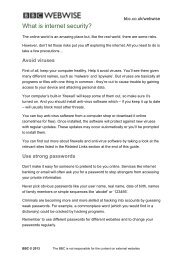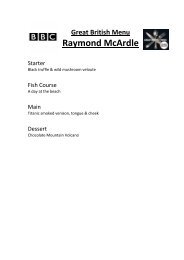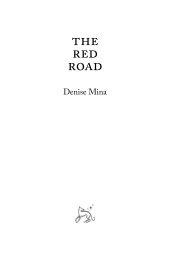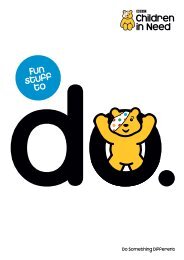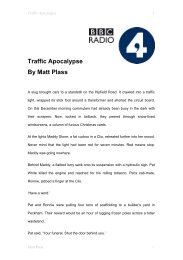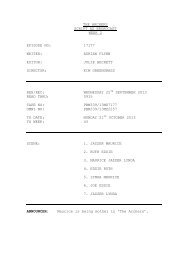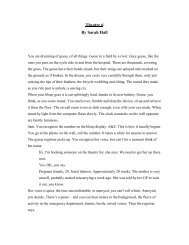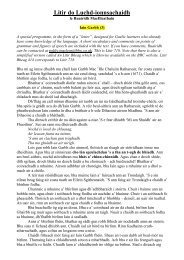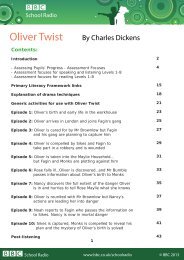Technical Specification: WAV & BWAV - BBC.com
Technical Specification: WAV & BWAV - BBC.com
Technical Specification: WAV & BWAV - BBC.com
You also want an ePaper? Increase the reach of your titles
YUMPU automatically turns print PDFs into web optimized ePapers that Google loves.
Stereo:<br />
Stereo programmes must always be supplied as a single wav (or FLAC) file with the two channels<br />
recorded as A and B (ie. left and right) not as M and S (ie. sum and difference).<br />
Stereo programmes must be recorded so as to be <strong>com</strong>patible for listeners in mono. In general signals<br />
should be in phase between channels. The S (difference) signal should rarely exceed the M (sum)<br />
signal (otherwise cancellation can result when the signal is heard in mono). Avoid extremes of stereo<br />
imagery or “out of phase” effects as these present problems with mono <strong>com</strong>patibility.<br />
Tone.<br />
Radio 3 is the only radio network that requires tone. The tone should last for 30 seconds and should<br />
be on the end of the recording after one minute of silence.<br />
Reference tone, where used, should be at -18dBFS or PPM 4 on A, B and/or M.<br />
If submitting material with reference tone, tone and programme material must be have been monitored<br />
and measured through the same technical chain. The level of the tone must be equivalent to 0dBu and<br />
no less than 8dB below peak audio level for the programme material.<br />
THE LEVEL OF TONE MUST HAVE A KNOWN RELATIONSHIP WITH THE LEVEL OF THE<br />
PROGRAMME MATERIAL AND THIS MUST BE STATED; for example: “Tone at 8dB below<br />
peak programme level”.<br />
Important general technical notes follow ...<br />
Note on Sample Rate: Throughout 2013 all of <strong>BBC</strong> Radio will adopt 48kHz as the standard sample<br />
rate. It is desirable to record programmes at this sample rate.<br />
Note on Data Compression (a <strong>com</strong>mon term for bit rate reduction):<br />
Data Compression is usually destructive (“lossy”) and is best avoided. Examples include mp2, mp3,<br />
AAC and mp4<br />
The use of such lossy data <strong>com</strong>pression should be avoided wherever possible. Most solid state audio<br />
recorders (e.g. SD Card) offer a choice of recording formats, and linear should always be used in<br />
preference to any of the data <strong>com</strong>pressed formats.<br />
It is possible to apply lossless data <strong>com</strong>pression without <strong>com</strong>promising sound quality, using FLAC<br />
(Free Lossless Audio Codec).<br />
Take care when moving files between devices. Certain proprietary software may irrevocably damage<br />
your audio. Depending on the settings, the software may add data reduction techniques or Digital<br />
Rights Management (DRM), either of which could prevent your programme from being broadcast.<br />
Cascade (encoding):



